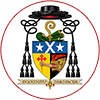Surely never before have we had so many days of warm or hot sunshine! Throughout the year, to date, 2025 has been marked by low or barely existent rainfall, and long long stretches of fine weather. This all seemed like the best possible news for bees, up to mid-Spring. Our bee colonies came through the winter in a strong and happy state. This year’s swarming took place early: something beekeepers dream about! With early swarming, colony numbers increase painlessly. Then with young, almost swarm-proof queens at their head, colonies can build up in good time to take advantage of the nectar flows of late summer. And indeed the Pluscarden bees did well at the Spring flowers: the apples, pears, soft fruit and (especially) the sycamore trees. So we had early honey, and started to look forward, with good hopes, to another bumper year.
But then the sun continued to shine and shine, and the flowers all about started to dry up. On and on went the fine weather, and before long our bees were in trouble. Soon all colonies were in a state of starvation. So we were feeding feeding feeding, in high summer, just to keep them alive. And then other odd things started to happen. Lovely new queens would fail to mate; or if mated they would just fade away after some weeks; or we had several brand new queens deciding suddenly, and with no apparent reason, to abscond in a new swarm. One possible explanation for this could be the rocketing numbers of varroa mites. The fine weather seems to have favoured these most unwelcome parasites. We try to control them, but re-infestation can take place very rapidly. Varroa mites gravely weaken their hosts. If left to themselves, they will completely destroy the bees on which they live.
The clover was flowering early this year: from late May. Nothing there for our bees. Then by late June, also early, the Lime trees flowered. In some years we get wonderful honey from the Lime trees. But in drought conditions, there was no nectar from this source either. On the other hand: for the wasps, it was all good news. This year saw a wasp population explosion. Soon the wasps, in huge numbers, were attacking our hives. Several weaker colonies succumbed. The wasps simply barge in, past ineffectual guards. Once well established in power, they go on to strip out all the honey there is. Not only that: they will then eat all the bees they can find: leaving not one survivor.
So, after all that, our colony numbers this year have landed up quite reduced. Wondering whether or not the heather could be expected to yield, we decided nevertheless in early August to put our best colonies up on the hill, as usual, amid their limitless acres of flowering ling.
And - thank God! – after some few but sufficient downpours, followed by more warm sunshine, from about 10th August the nectar from the ling heather flowed abundantly. Bees work very hard at the heather. They need fly only yards to get it, so back and forth they go, bringing in their heavy burdens of pollen and nectar. With remarkable rapidity then, once again they filled supers for us, and filled brood nests for themselves. Victory snatched from the jaws of defeat, courtesy of our beautiful purple-flowering Scottish hills! As these notes are being written our out-apiary bees are still up on their hills. We will bring them home to their winter sites soon, to prepare them, God willing, for next year’s season.
DBH


